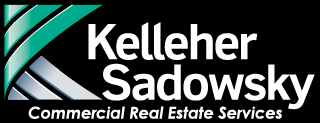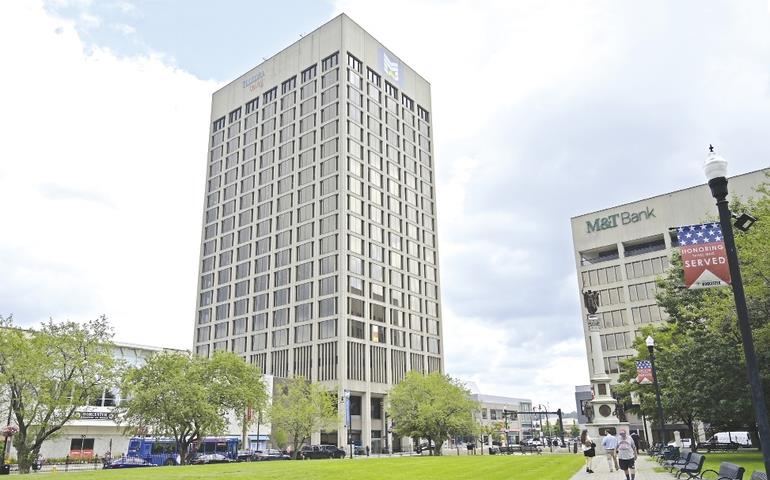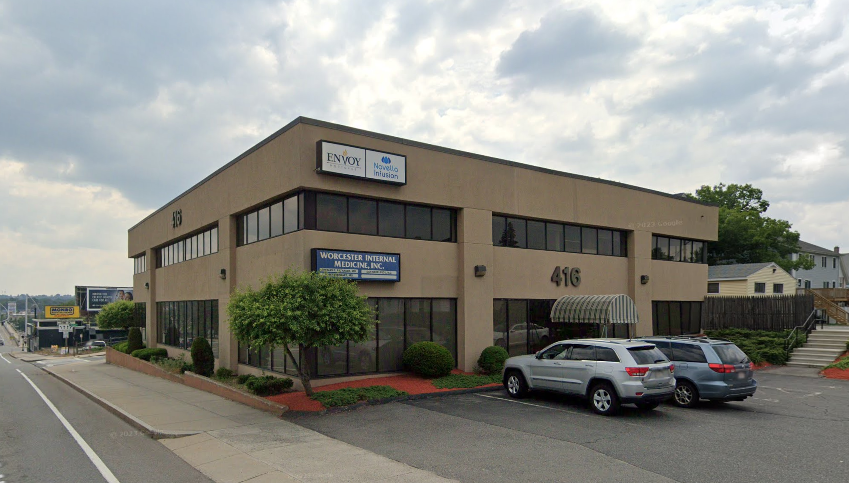Worcester Business Journal
August 2023
For 11 years, the Telegram & Gazette name was part of Worcester’s skyline.
When the paper of record in Central Massachusetts moved into one of the tallest buildings in the city at 100 Front St. in 2012, its substantial lease of office space enabled the media company to put its logo at the top of the 20-story building. In a city with brand logos on a handful of tall buildings, the Telegram’s was the highest.
That high profile started to come to an end in July, when the newspaper’s parent company – Virginia-based Gannett – signed a much smaller lease in the building and crews began removing the T&G logo from atop the Mercantile Center. Once the removal is complete, the only logo will be the building’s own branding.
In a midsize real estate market like Worcester, which company’s logo adorns prominent tall office buildings like the Mercantile Center often is tied to what business is leasing the most space, and companies usually don’t have to pay extra for the right to have their signage on buildings. And as the commercial real estate market shifts, companies institute work-from-home policies, and brands are acquired by larger companies, the result is a hodgepodge of branded office towers in Worcester, including one whose company no longer occupies the building and another where the branded company is leasing fewer offices.
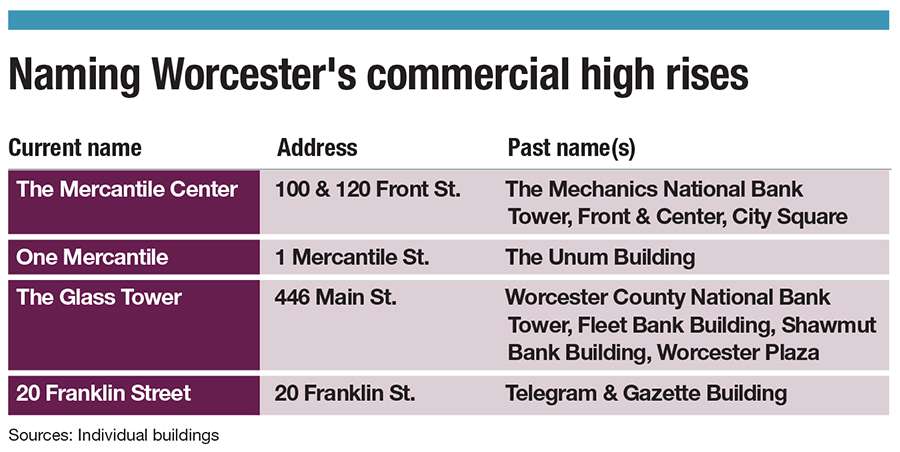
Additionally, instead of tall office buildings being named after the businesses that occupied them like the originally named The Second State Mutual Life Building at 340 Main St. or The Guaranty Bank & Trust Building at 370 Main St., owners and developers of Worcester’s prominent buildings are creating their own branding, designed to set these facilities apart to entice potential tenants, such as the case with The Mercantile Center and The Glass Tower at 446 Main St.
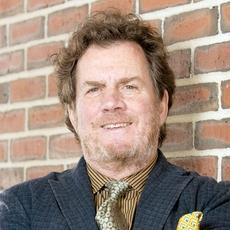
“It sends a message to the tenant market that you are serious,” said Charles “Chip” Norton, managing director of the Mercantile Center owner, Franklin Realty Advisors of Wellesley.
The value proposition
In the Worcester real estate market, putting a company sign on an office building is often a function of the size of the lease, rather than purchasing naming rights like at the Polar Park stadium or the DCU Center arena, said Will Kelleher, principal at Worcester real estate brokerage Kelleher & Sadowsky. Signage rights can be used in negotiations to sweeten the deal when trying to get a tenant to sign a lease in a building.
While the tenant doesn’t pay directly for signage rights, it does pay for the sign itself, installation, maintenance, and eventually removal, Kelleher said.
The value of putting a company’s name on top of a prominent building is immeasurable, said Ryan Chamberlain, vice president at Synergy Investments, which owns buildings around Massachusetts including the Glass Tower at 446 Main St. in Worcester. People will see the company logo from most places around the city, including I-290, which cuts through Worcester.
“You can’t put a dollar figure on that,” said Chamberlain.
Some businesses are willing to pay a higher rental rate for the right to show their brand atop a building, Chamberlain said. If the right tenant came along and took a significant lease at The Glass Tower, Synergy would be receptive to putting a company’s name atop the office building
Signage rights can be handed down with a lease through acquisitions, as is the case with M&T Bank at the 120 Front St. office complex. The Buffalo bank took over the lease and signage rights dating back to when Flagship Bank leased 50,000 square feet in the office building.
The rights were handed down to People’s United Bank, which was acquired by M&T in 2022. M&T then renegotiated the number and positions of the signs at 120 Front St. as it reduced its leased space in the building, Norton said.
A bank with a retail location like M&T will want as much exposure as possible, but not all tenants find value in advertising their presence, Kelleher said. A medical tenant with administrative offices may not want to advertise its presence to avoid confusion for people seeking medical attention. The U.S. Customs and Border Patrol is a tenant at 120 Front St. but does not advertise its presence on the building’s exterior.
No longer the Unum Building
A block away from the Mercantile Center, the office building One Mercantile presents a complication of branding a building with a tenant’s name. One Mercantile is owned by Benderson Development of Florida and managed by Franklin Realty Advisors. It was built for Tennessee-based insurance company Unum and was constructed with large Unum signs atop the building.
In 2021, Unum changed its strategy and switched the 400 employees who worked in the Unum Building to remote work. The company still holds the lease to the building but Franklin Realty and Kelleher & Sadowsky needed to sublease the space in a structure designed to be a single-tenant office building.
The building was rebranded as One Mercantile after its address, and new signage was added at street level to give exposure to current tenants like Sullivan Insurance Group and global IT firm Xceedance.
The Unum sign still looms large over Worcester but because the company holds the lease, it retains rights. The sign has some value as advertising, said Norton.
Removing large signs positioned atop a building is expensive, costing into the tens of thousands of dollars, Kelleher said. It’s not as expensive as fabrication and installation, but someone has to pay for contractors to safely remove the sign and then dispose of the material afterward.
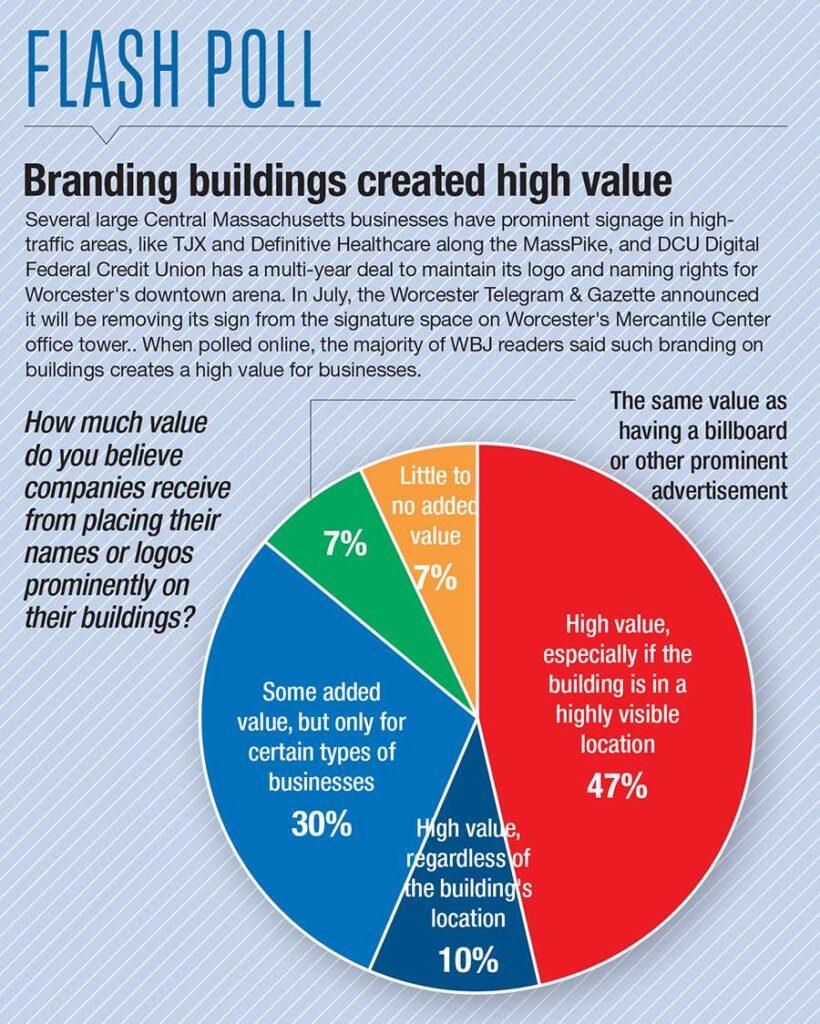
Branding a building
When Franklin Realty Advisors purchased the properties at 100 and 120 Front St. in 2015, the buildings were branded as Front and Center by previous owners. Norton partnered with Boston public relations firm Conventures and Kelleher & Sadowsky Associates, also a tenant at the Mercantile Center, to rebrand the buildings.
“The rebranding was a cornerstone of the strategy,” Conventures President Dusty Rhodes said. “Strong branding is key.”
At a meeting, Kelleher & Sadowsky Principal Jim Umphrey recounted how historically the area was a mercantile center and a lightbulb went on throughout the group. The development found its name.
The group developed a color palette and style guide for the Mercantile Center. They reused brackets for the banners around the building, left over from when the buildings were part of the Worcester Common Fashion Outlet Mall.
A few blocks away at 446 Main St. is The Glass Tower, bought in 2019 by Synergy. It is the tallest building in Worcester, tied with a residential tower at 600 Main St. It has undergone a number of rebrands since it was built in 1974: The Shawmut Bank Tower, the Worcester County National Bank Tower, and prior to the current rebranding, Worcester Plaza.
Like Norton, Chamberlain of Synergy felt it was important for the developer to rebrand the building while it was updating the office tower.
“It gives it a fresh start, especially after renovations,” said Chamberlain.
Synergy wants the building to be part of the community, he said, and while speaking with members of the community after purchasing the building, people kept referring to the building as The Glass Tower, so the company went with the name.
By Timothy Doyle
